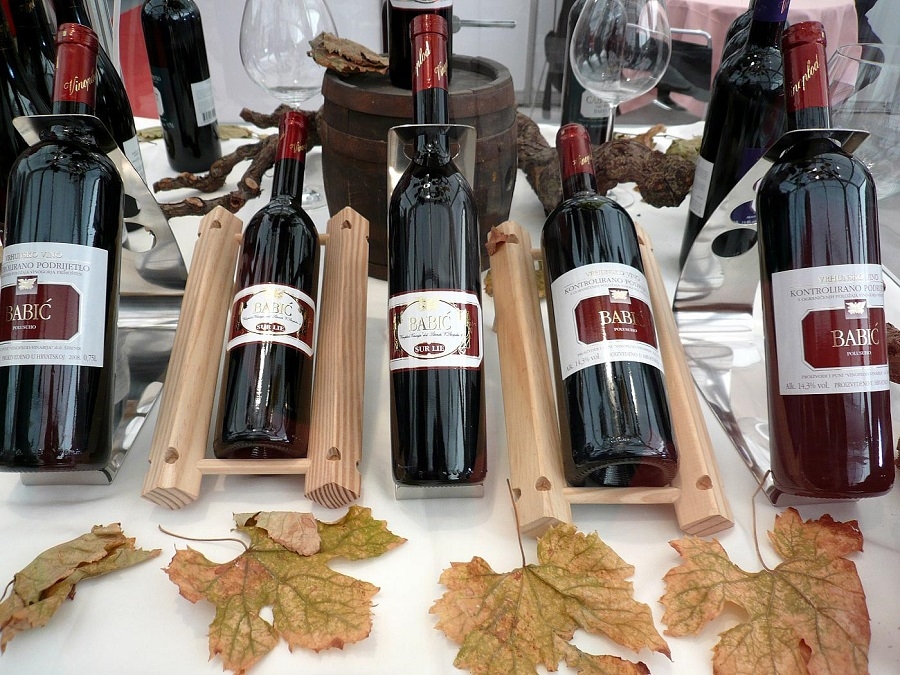Continuing our look at the indigenous grapes of Croatia on August 5, 2016 – meet babić.
Babić is quite a common Croatian last name. Babić is also a name of an indigenous red grape variety, mostly found in the Central Dalmatia region, mostly near the coastline and on some Dalmatian islands. Detailed genetic analyses have shown that it is in fact an indigenous grape variety, existing only in this region, although it was also shown that it has genetic bonds with Dobričić (a variety that is also one of the parents of now-famous Plavac mali).
It is one of the most abundant red wines in Croatia – it accounts for about 4% of all red cultivars in Croatia, in terms of planted area, so it is grown on various terroirs. When the vineyards are on fertile soil, the yield is unusually high; however the quality of the wine tends to be much lower. It is, though, an excellent eating grape, with wonderful inviting blue berries, and has traditionally been blended with other varieties to create lower quality “table wines” used to mix with water to create “bevanda”, very common afternoon drink in that region of Croatia. However, when grown on less fertile soil (for instance, on the well-known karst terraces around Primošten), the quantity of grapes is much lower and the much higher quality wine can be made in the cellar – thanks to the extremely high sugar content in the grapes that results from many sunny hours, and not a lot of water on the terraces.
The colour of the wine is exquisite: dark deep ruby red, almost purple, leaving amazing tears of wine on a glass and the high sugar content in the grapes converts to high alcohol content in the wine – somewhere between 13 and 15 percent. The wine has a characteristic full taste, earthy and mineral, reminiscent of various berries, figs and herbs, with just enough acidity to balance the alcohol and high tannins. Thanks to all those characteristics, premium babić is sometimes aged in oak barrels and the results are amazing! The wine is meant to be served at 18 °C, and it is a perfect partner for any dark meat dish (and this region has a tradition of hunting, so if you get a chance to taste any babić locally, try and find some game to go along with it), but also some grilled oily fish, like mackerel, tuna or pilchard (locally called “srdela”; a small well-hidden secret that you should give a try if you get a chance).
The most notable babić producers are PZ Vinoplod, with the largest production that is offering both more affordable and premium types of babić, and Suha Punta vinery (also producing a wonderful rose wine from babić, syrah and grenache grapes, called Opol, very different from you usual roses, as well as prošek, a sweet dessert wine traditionally made in Croatia using sun-dried berries achieving extremely high sugar content), Piližota vinery, Gašperov family and Bibich, well known and respected vinery in Croatia that blends the best of babić with lasina and plavina to create its R6 wine. Additional note: Zlatan Plenković, one of the pioneers of production of premium plavac mali wine on the island of Hvar has recently invested into a wonderful babić vineyard (over one million vines planted at a former army training facility!), and the results are also worth investigating. A lot of effort has recently been invested by Croatian scientists and vintners to create a wide base of clones that are free of any viral diseases that will help to create healthy reproduction in the future – so we can expect further improvements of quality and production of this wonderful fully local Croatian wine.
And for perhaps, Croatia’s most unusual vineyard, check out this Babić vineyard near Primošten.












